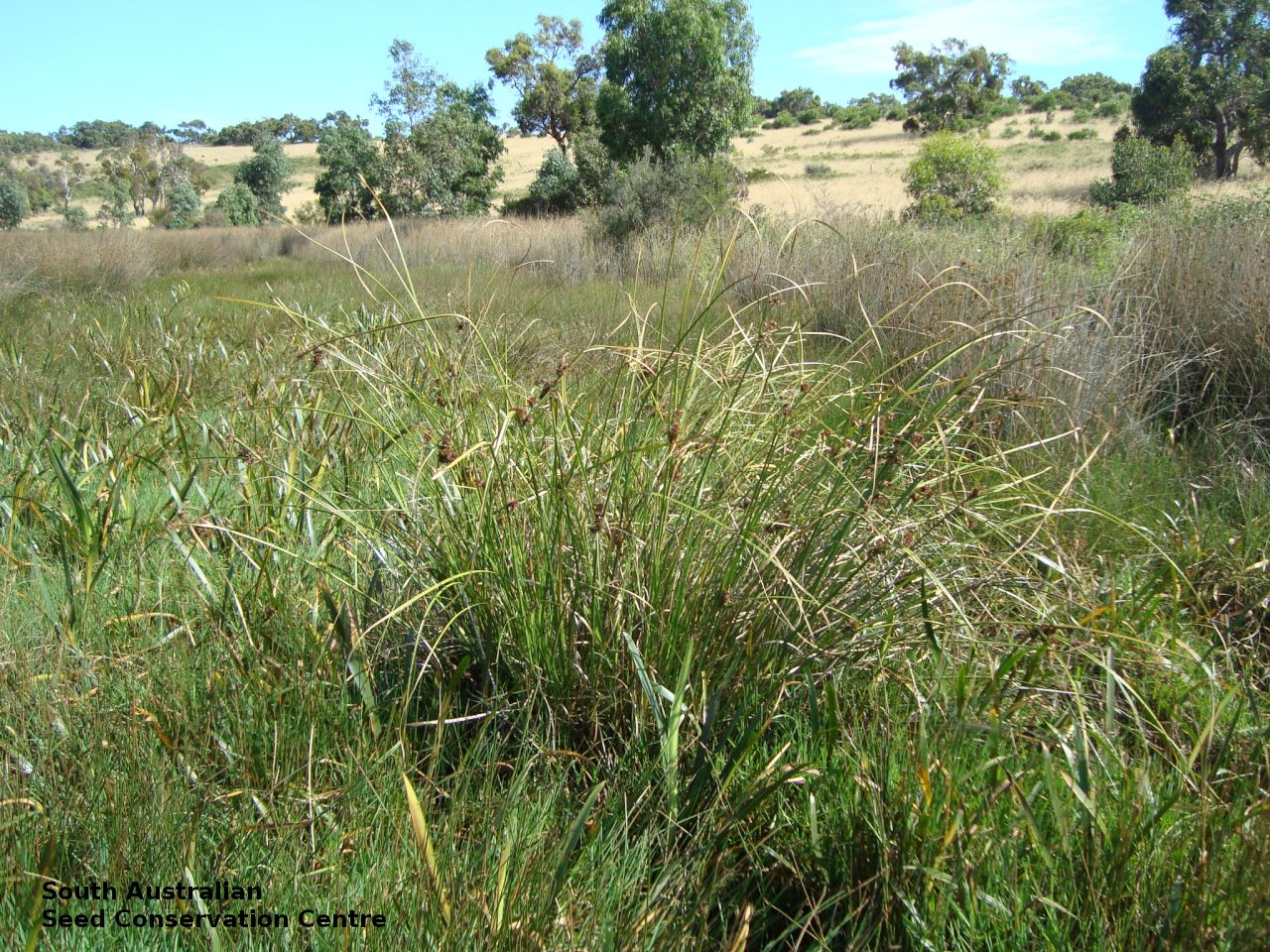
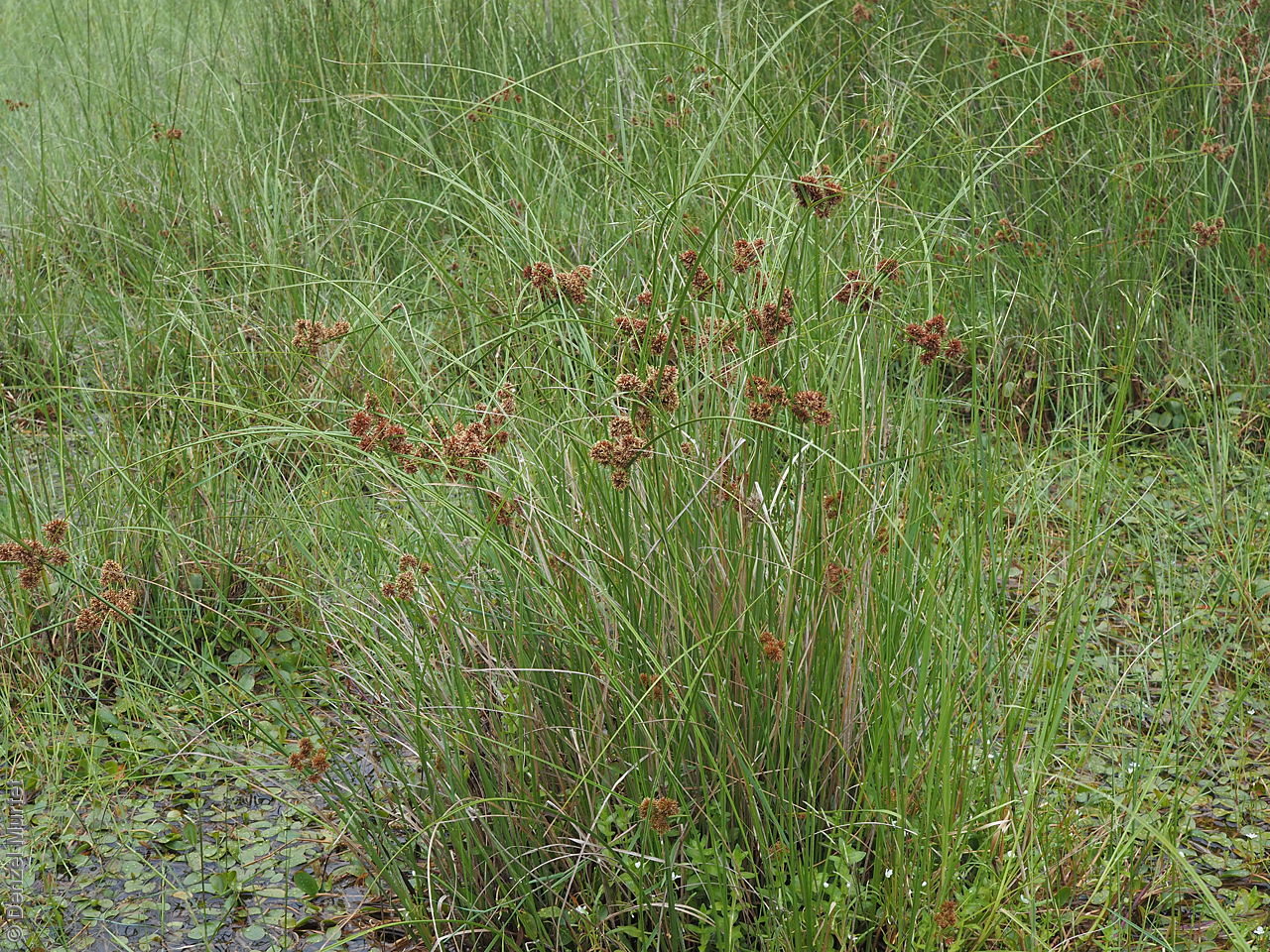
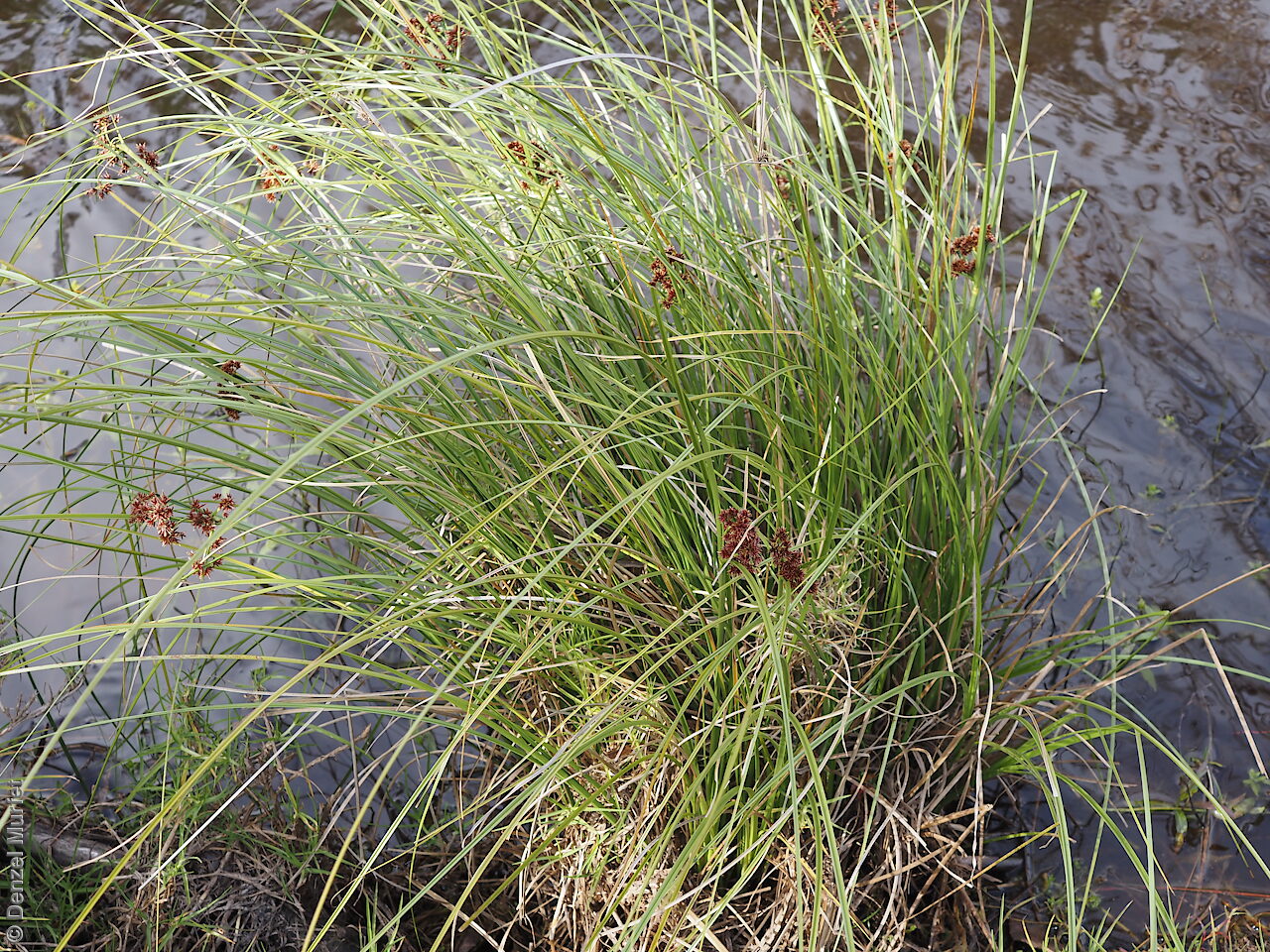
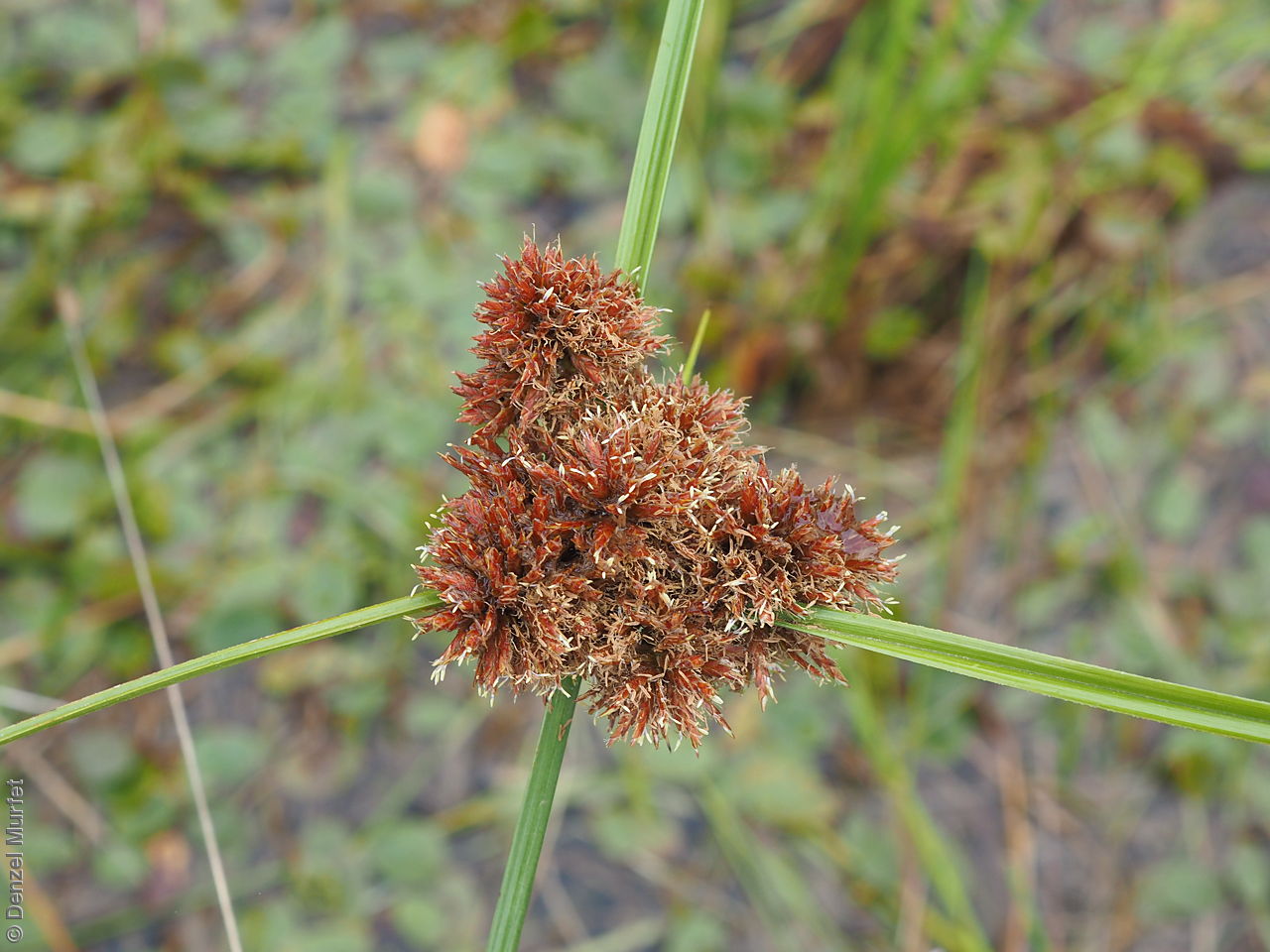
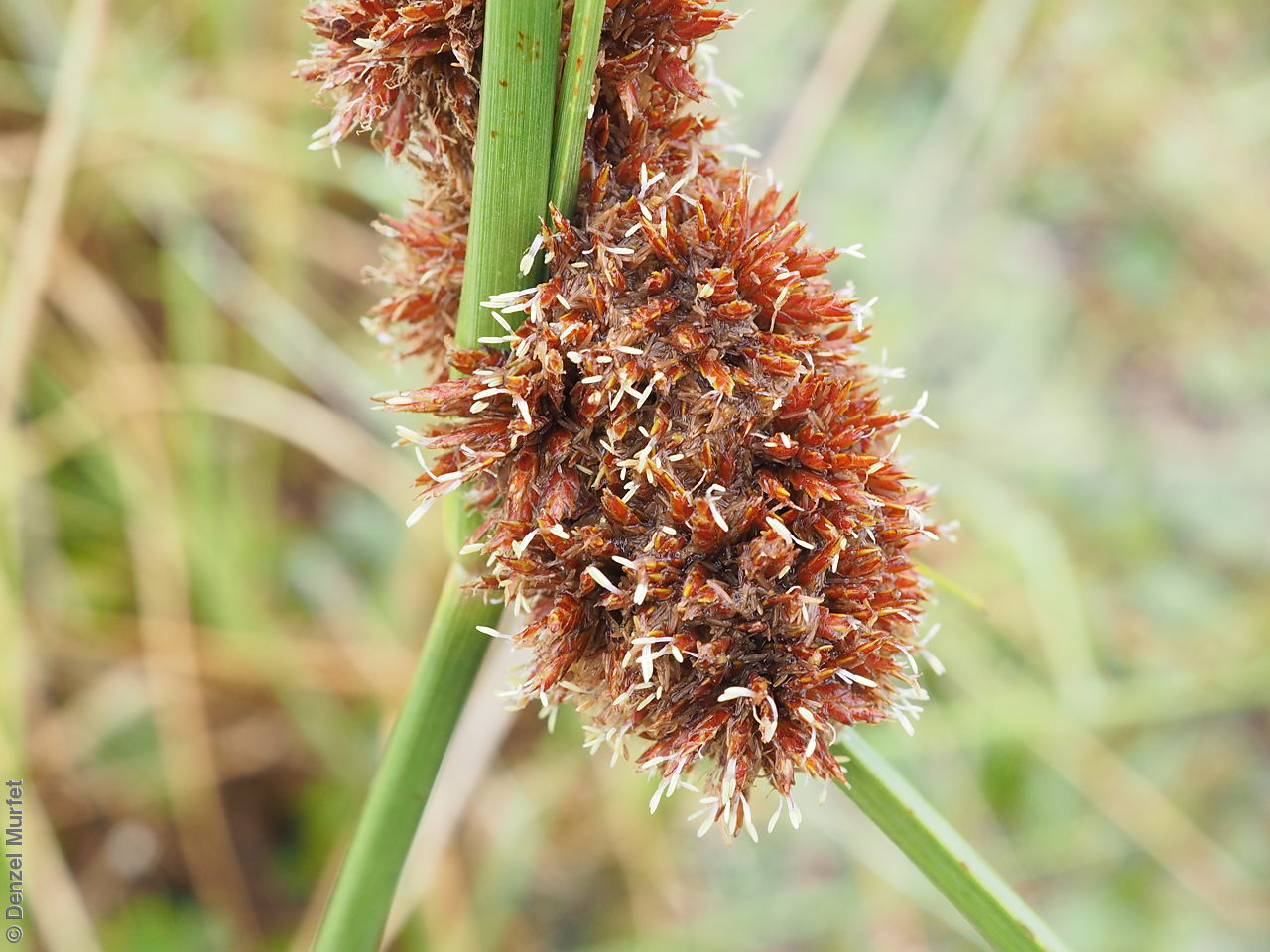
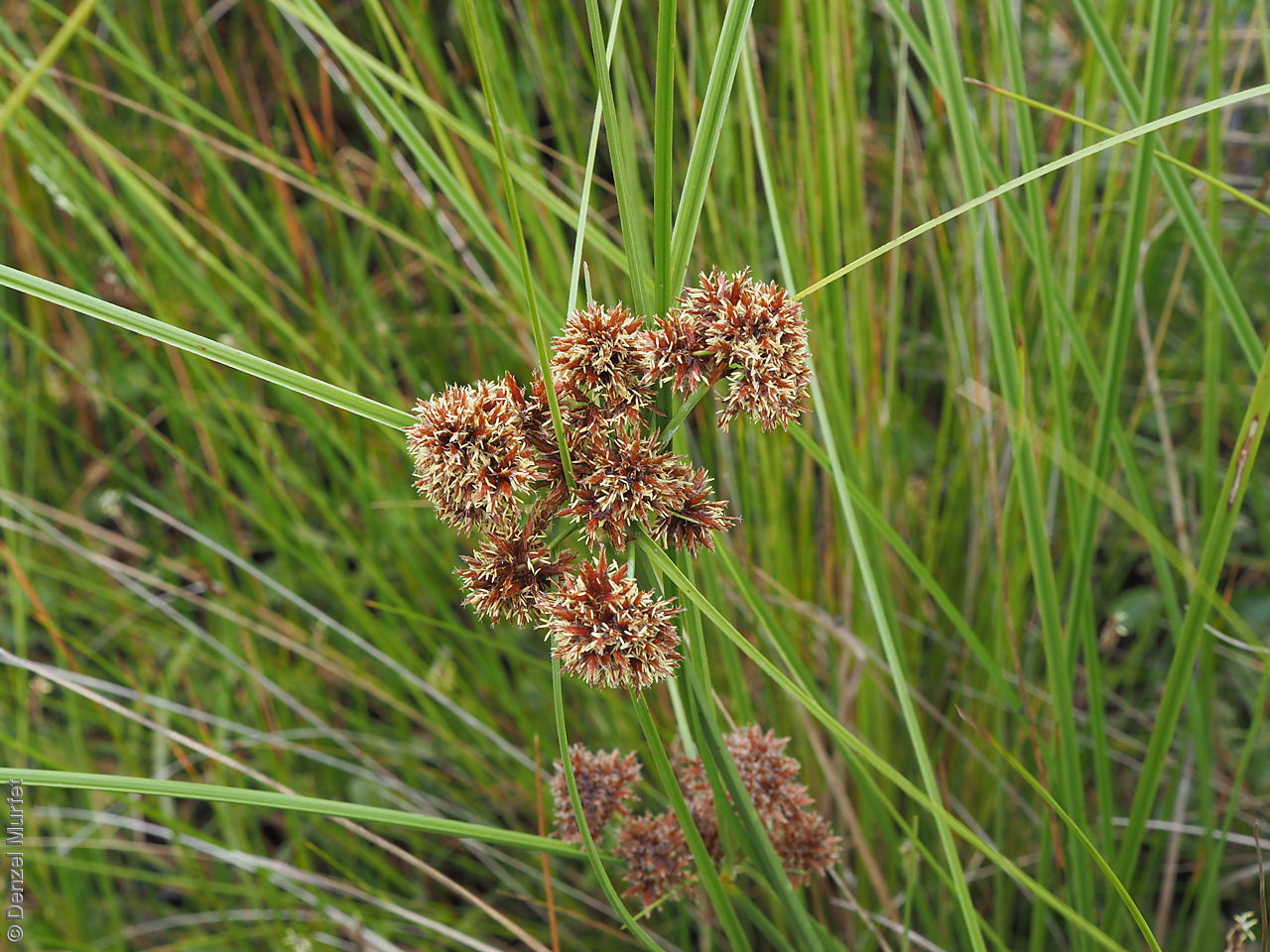
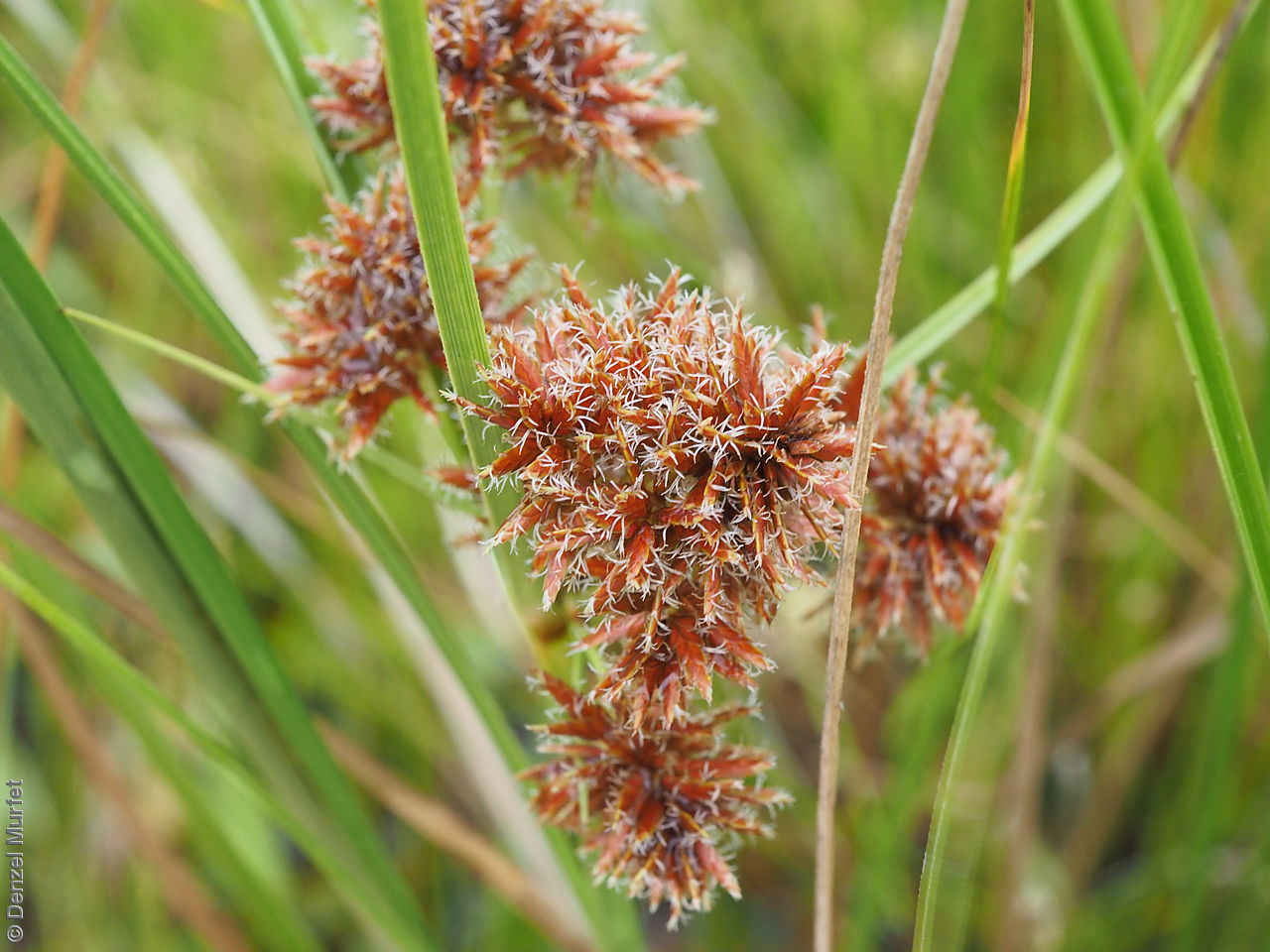
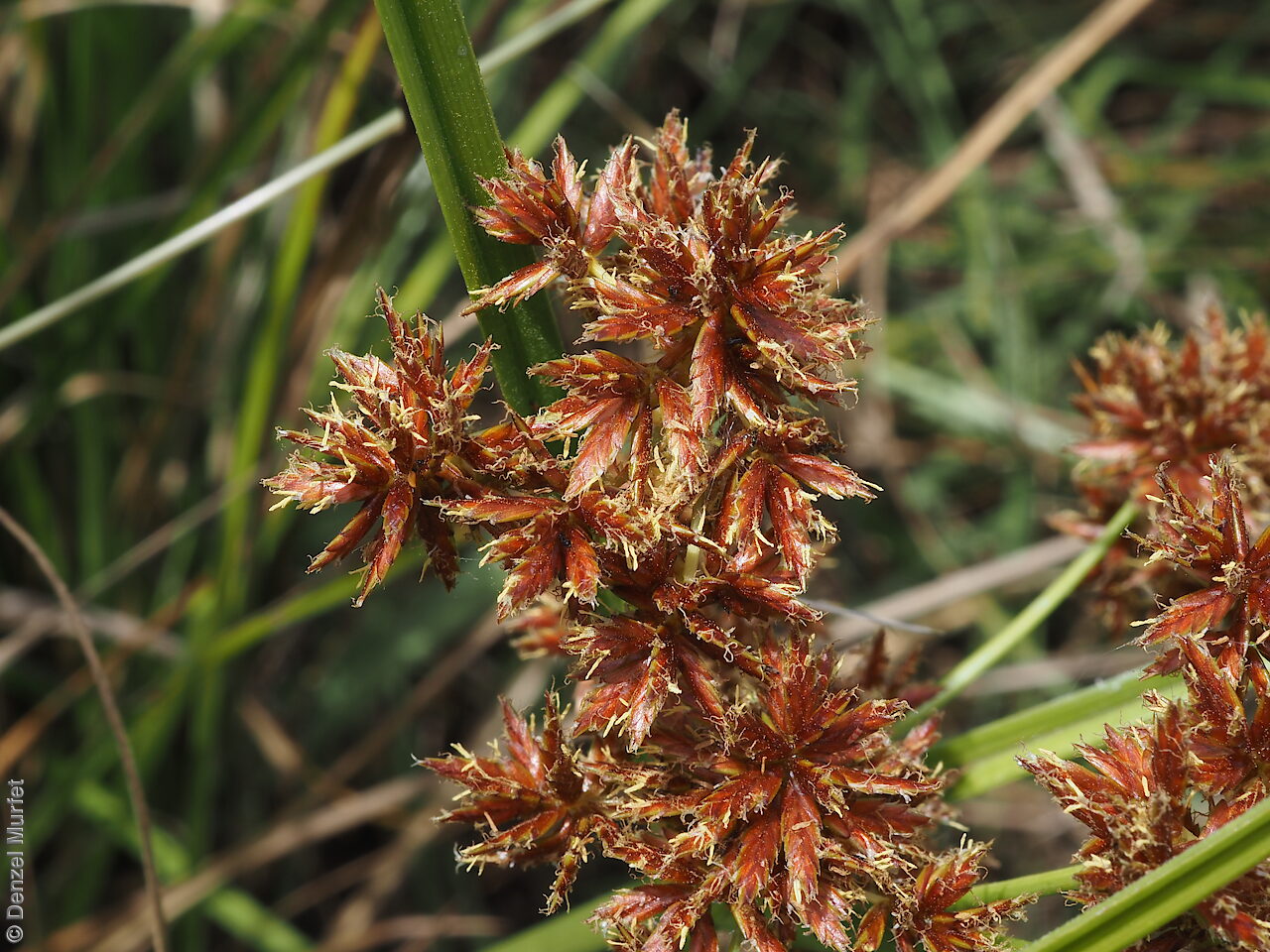
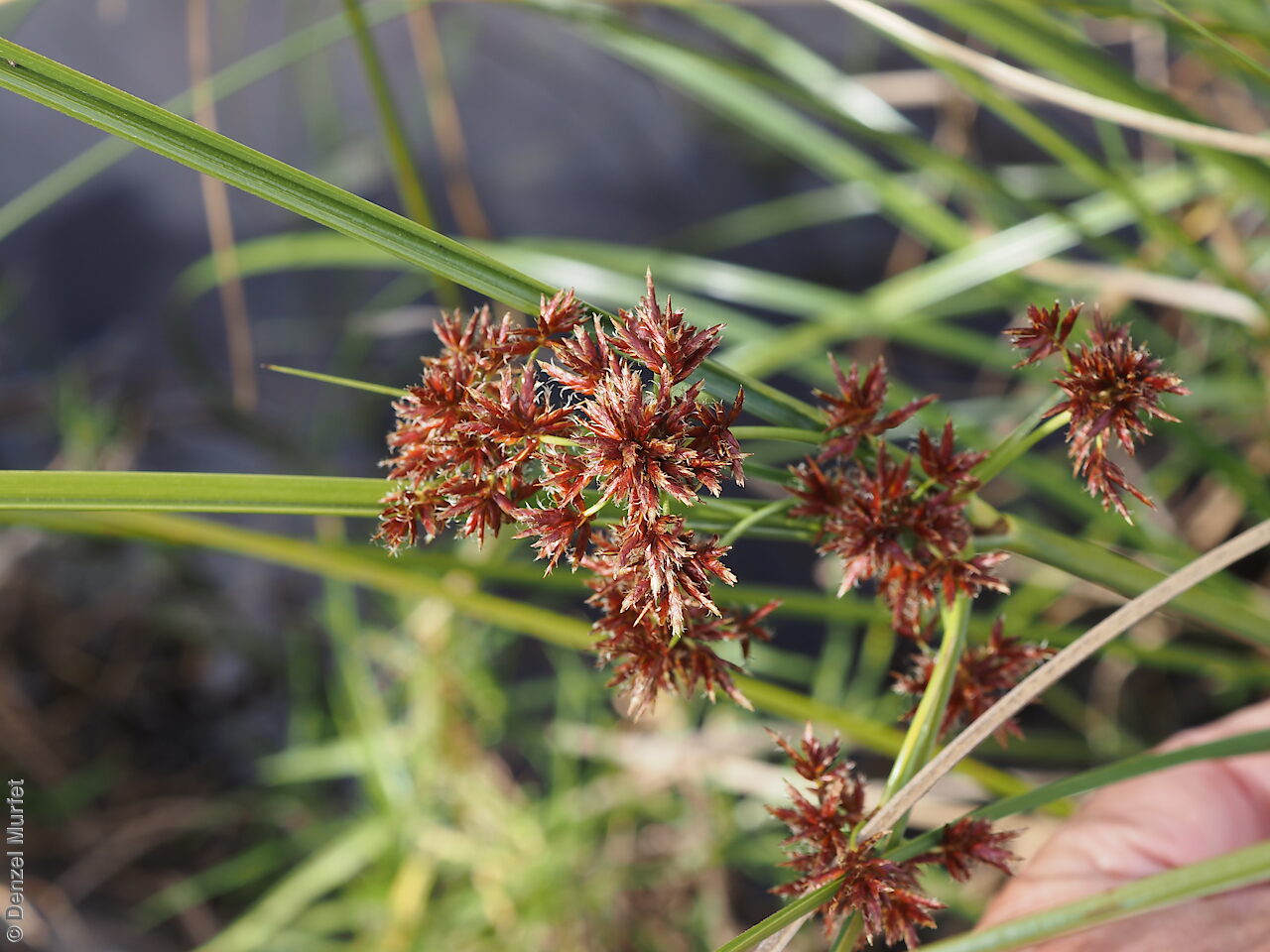
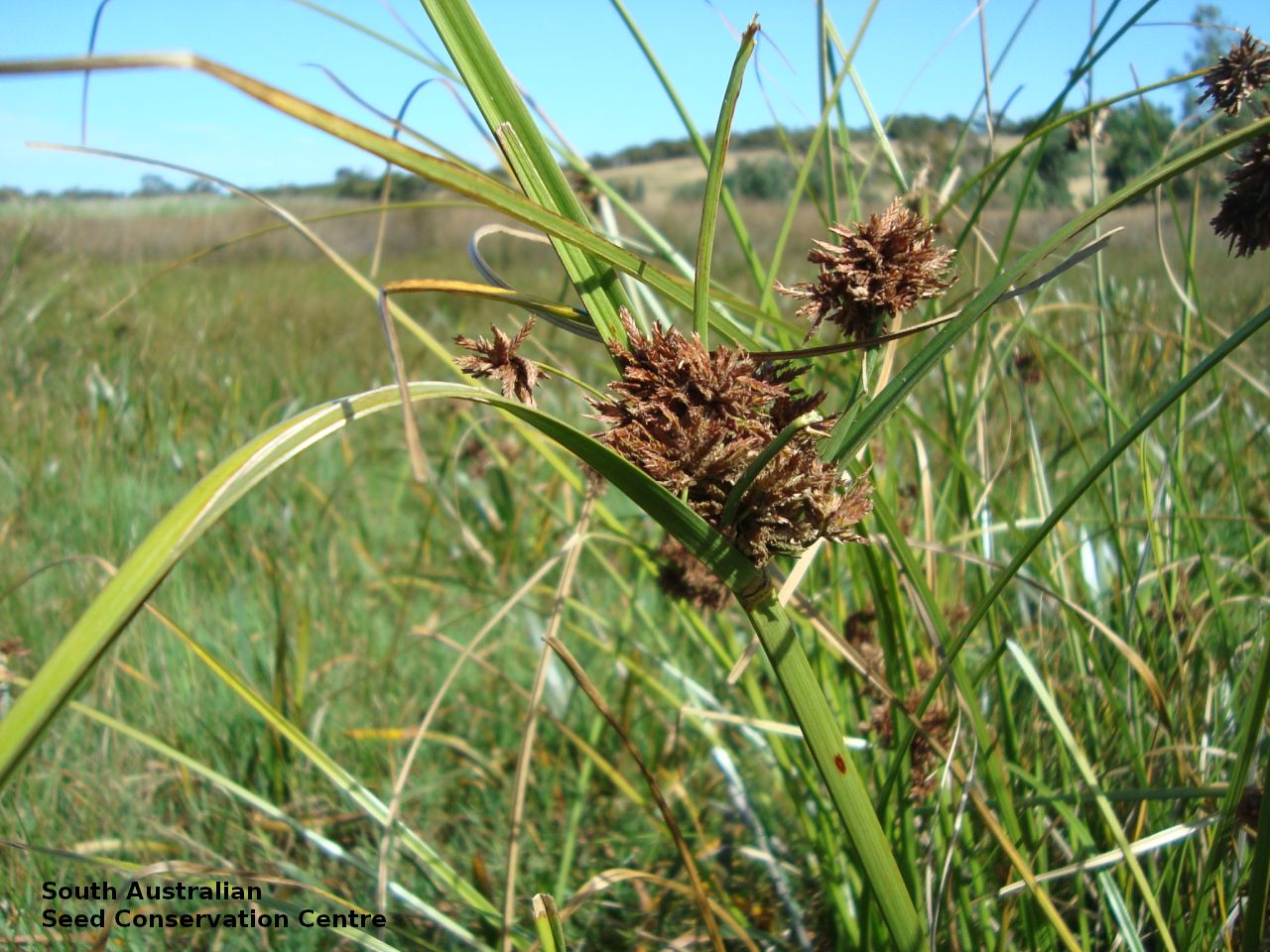
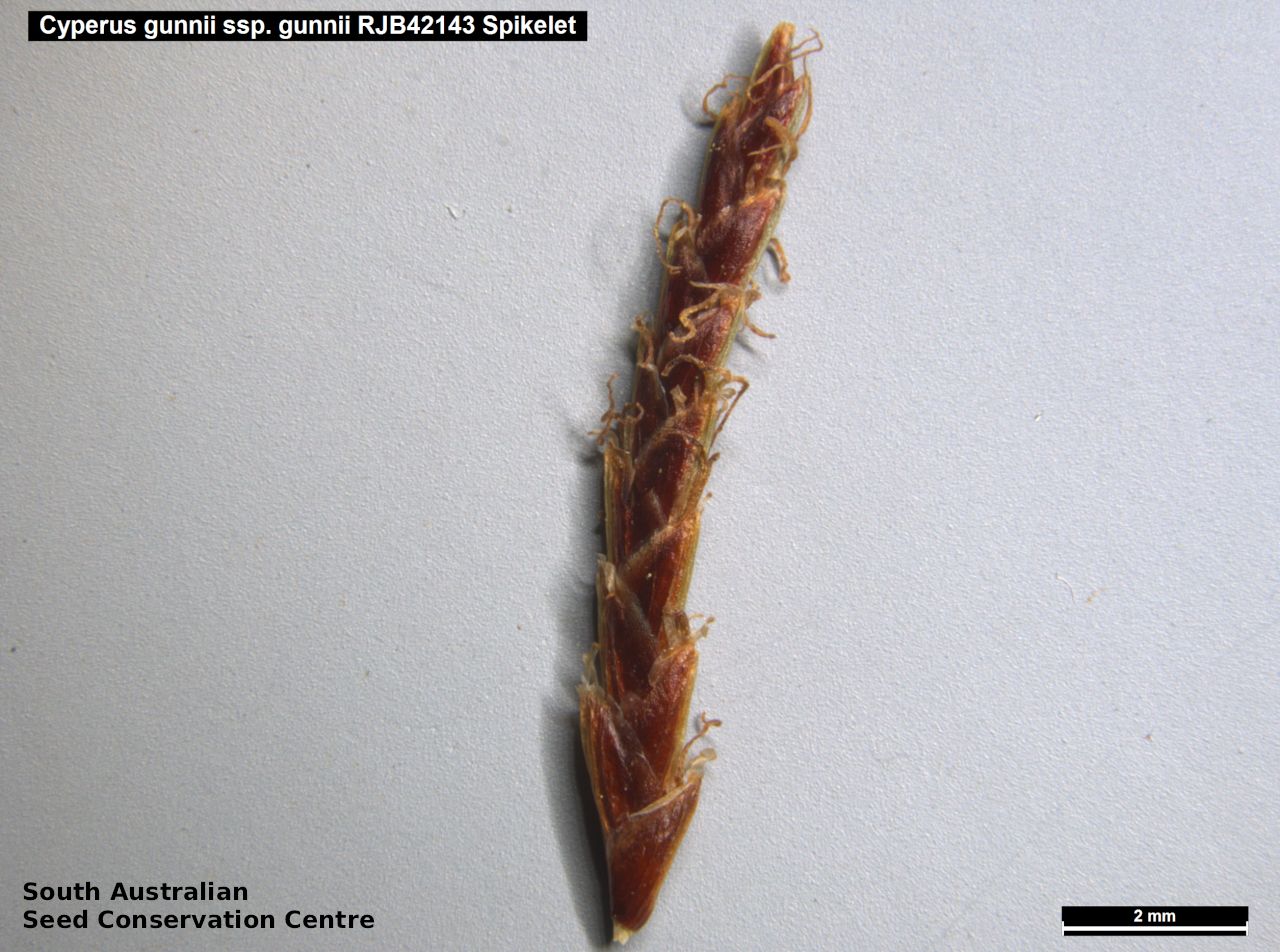
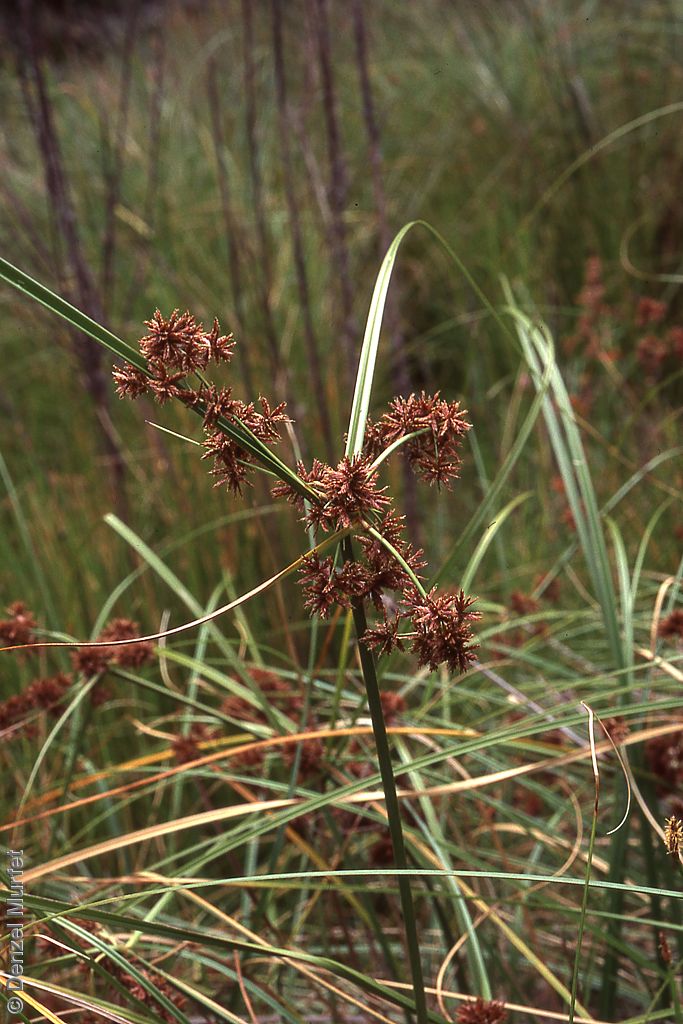
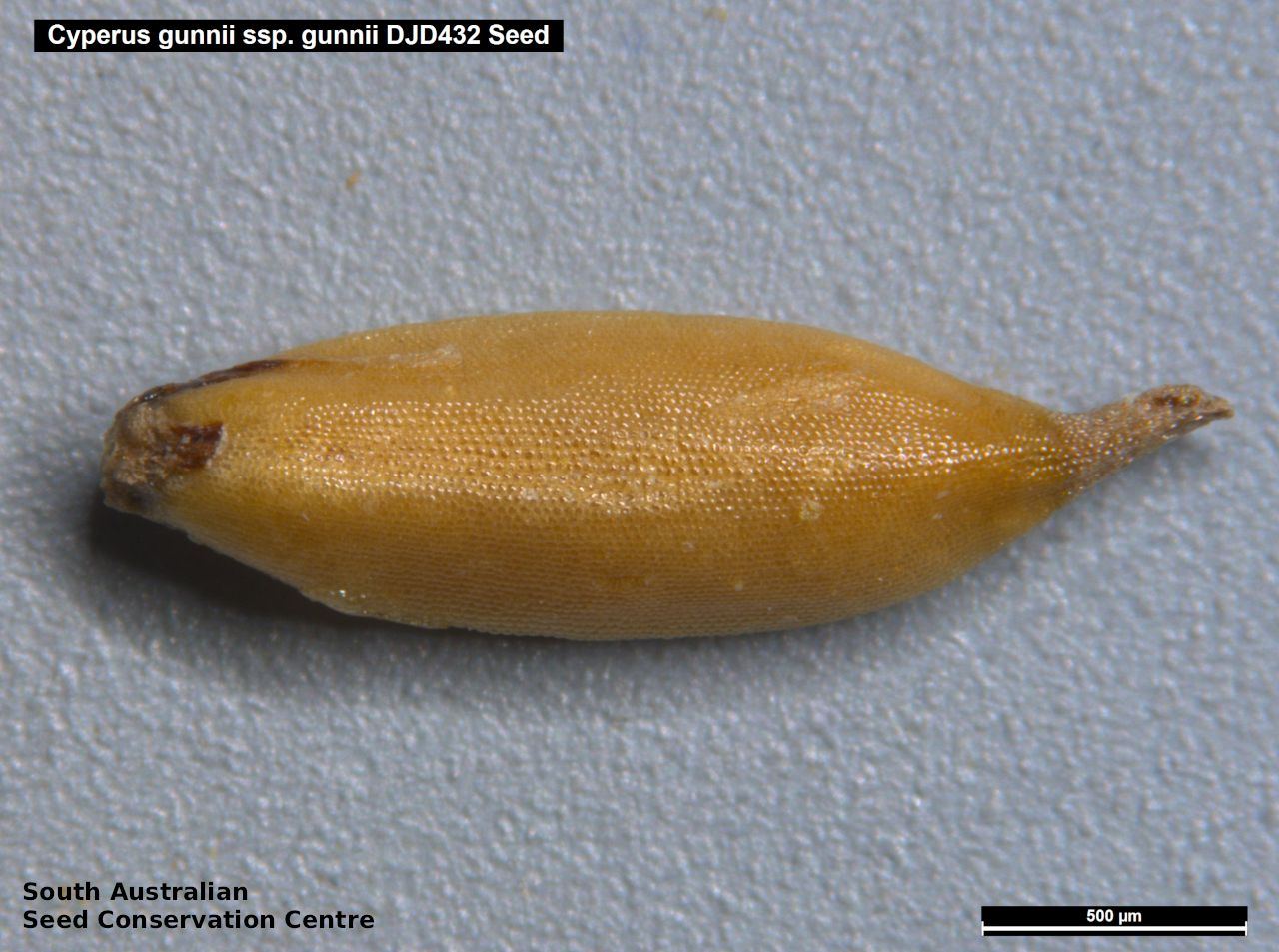
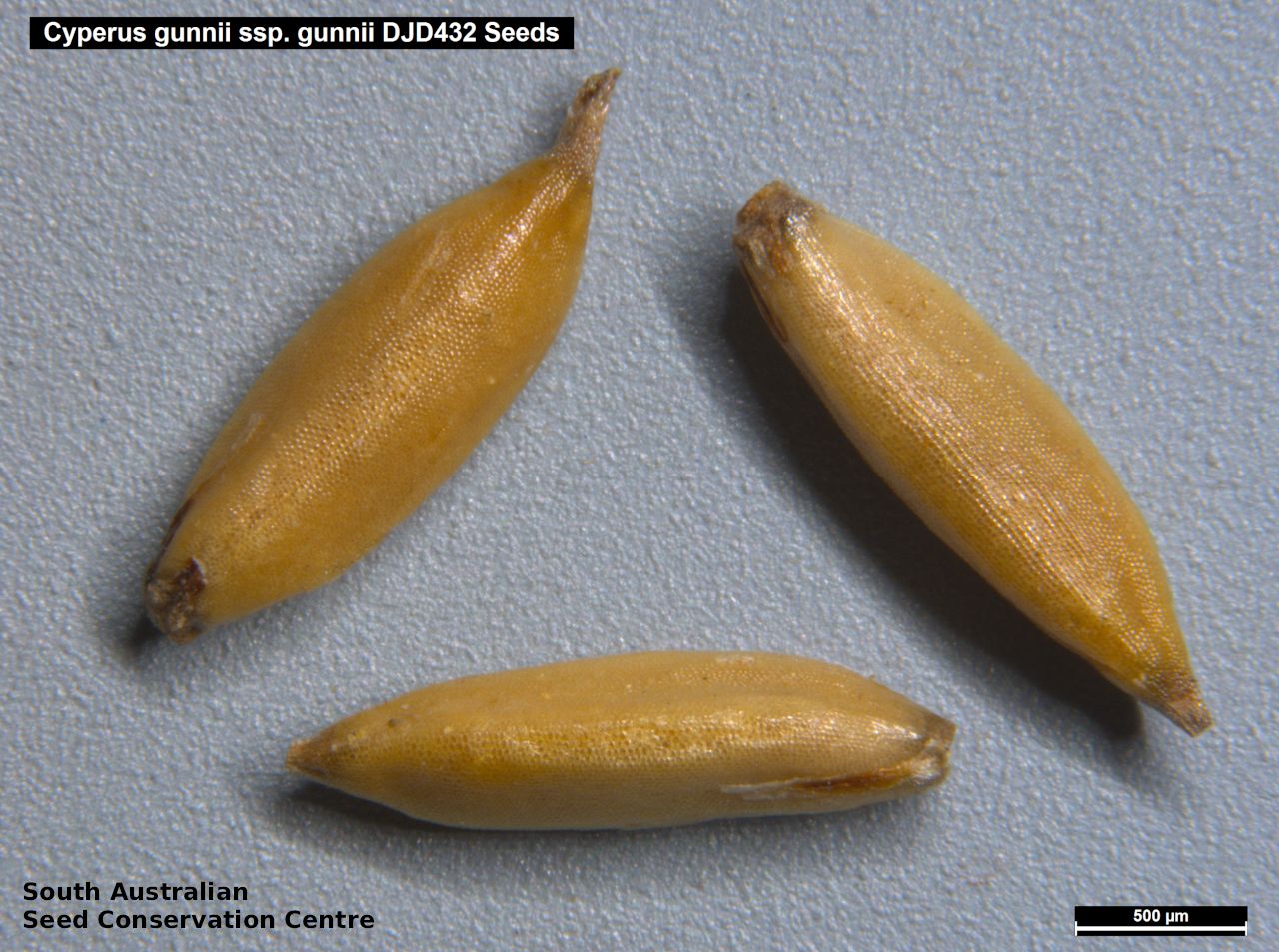


Botanical art
Etymology
Cyperus from the Latin 'cyperos' and derived from the Greek 'kypeiros', an ancient Greek name used by Homer and Theophrastus for several plants of this genus. Gunnii named in honour of Ronald Campbell Gunn (1808-1881), a pioneer botanist and scientist in Tasmania.
Distribution and status
Found in the Mount Lofty Ranges and the South-east in South Australia growing in swamp, seasonally wet areas and along creeks. Also found in Queensland, New South Wales and Victoria. Native. Uncommon in South Australia. Common in the other States.
Herbarium regions: Northern Lofty, Murray, Southern Lofty, South Eastern, Green Adelaide
NRM regions: Adelaide and Mount Lofty Ranges, South Australian Murray-Darling Basin, South East
AVH map: SA distribution map (external link)
Plant description
Tall, tufted perennial sedge with short thick rhizome. Stems trigonous to terete, smooth or occasionally scabrous, to 150 cm high and 4 mm diameter. Leaves septate-nodulose, as long as or exceeding the stem, to 6.5 mm wide. Inflorescence simple to compound with 5-8 primary branches to 12 cm long, clusters dense, globose, to 2 cm diameter; involucral bracts leaf-like, 2 or 3 much longer than inflorescence. Spikelets flattened, numerous per cluster, to 15 mm long and 2.5 mm wide in side view, usually red-brown to dark red-brown. Flowers in spring and summer. Fruits are brown fruit-head in dense clusters. Seeds are orange-brown long ovoid seed to 2.3 mm long and 0.5 mm wide, fine meshed-like surface. Seed embryo type is capitate.
Seed collection and propagation
Collect seeds between November and March. Collect fruits either by picking off the mature heads, those turning brown and come-off easily or break-off the whole heads. Place the heads in a tray and leave to dry for one to two weeks. Then rub the heads with a rubber bung to dislodge the seeds. Use a sieve to separate any unwanted material. Store the seeds with a desiccant such as dried silica beads or dry rice, in an air tight container in a cool and dry place. Seed viability ca be low.
| Location | No. of seeds (weight grams) | Number of plants | Date collected | Collection number Collection location | Date stored | % Viability | Storage temperature |
|---|---|---|---|---|---|---|---|
| BGA MSB | 16,000 (3.16 g) 16,000 (3.16 g) | 20 | 17-Mar-2006 | DJD432 Southern Lofty | 28-Jul-2006 | 45% | -18°C |
| BGA | 29,500 (5.75 g) | 3 | 16-Jan-2012 | KHB656 Southern Lofty | 1-Jan-2016 | 90% | -18°C |
Number of plants: This is the number of plants from which the seeds were collected.
Collection location: The Herbarium of South Australia's region name.
% Viability: Percentage of filled healthy seeds determined by a cut test or x-ray.